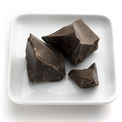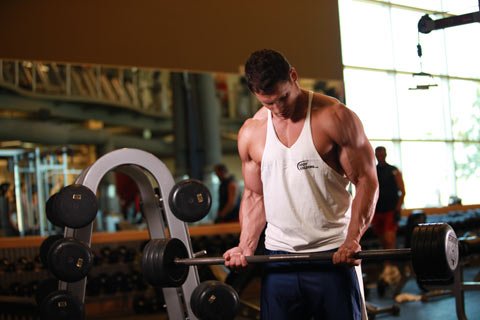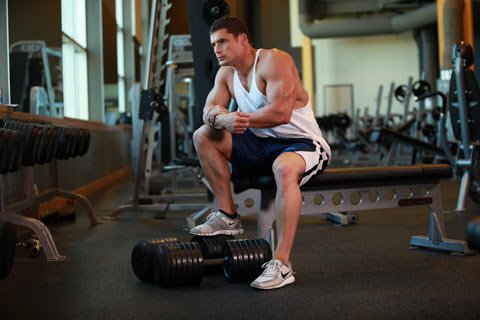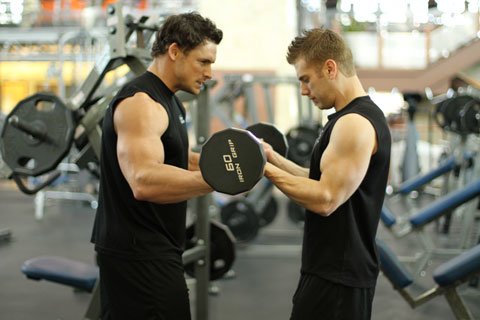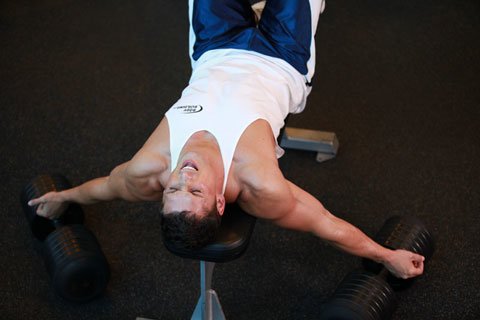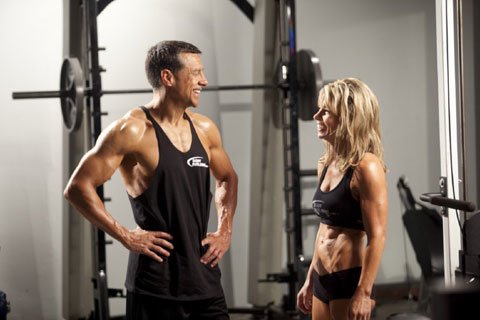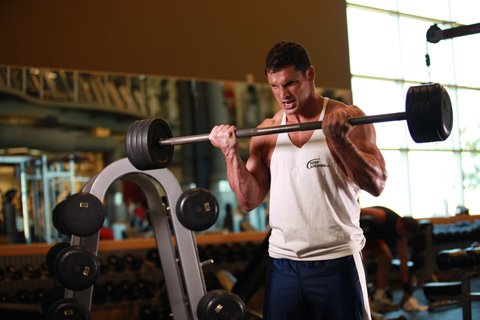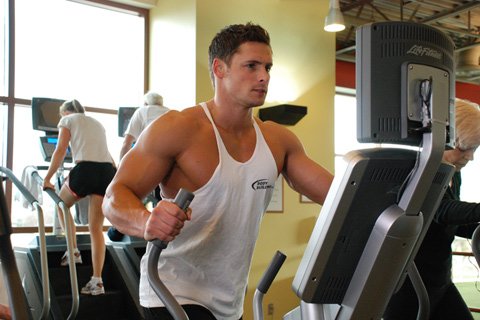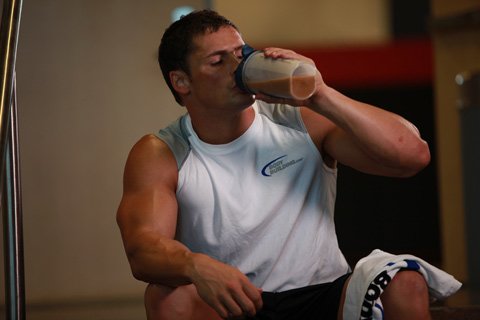|
|
| Have you ever wondered what the big deal with HIT is? We have the answer! Read on to discover the top 12 training guidelines for sensible high intensity weight training! Get the most out of your time at the gym! |
|
Now, for many years there has been a need by some to define high intensity training, better known as "H.I.T."
HIT is a safe, sensible, and practical approach to strength training and conditioning. Methods vary but so do needs. It is up to the coach or trainee to match them to their situation. HIT is not a "secret training method" that only a select few know. Its use is very wide spread and sources of information abound.
Training Frequency
Optimal Training
Training 3 Days a Week
I feel that 3 days per week is the best way to go for most people. It works for body composition, lean muscle improvements, strength, and conditioning. Most people don't train hard enough to run the risk of over training and three days is not that hard to get in.
This can be all weights or a mix of weights and body weight training. Throw in some implements to make things interesting and on your off days get outside and enjoy being active. Don't be afraid to be active. Practice sensible eating and you should do well.
Training 2 Days a Week
This also works, and for very busy people it may be ideal. Also, for the rare few (and I mean few) that train the way we used to in Deland, this is or can be a good frequency of training. Again, you can do all weights or mix with body weight training. It becomes more important to stay active on your non - training days if you are after a "lean look."
You can accomplish your goals of adding strength and maintaining muscle by training only 2 days a week. Some will even add muscle but you need to make these workouts count. Focus your training and try to do as much as you can in the space of your workout. Training should take anywhere from 30 to 60 minutes. Some really hard workouts can be completed in 15 minutes and change.
In my opinion, when you are training only twice a week, "conditioning" starts to suffer. I recommend participating in some kind of outdoor activity, something like jogging, water skiing, swimming, soccer, surfing, boogie boarding, walking, or biking. Get outside, burn some calories, stay fit and stay active. Twice a week can work but you have to practice sensible eating if you want to shed some fat.

I Recommend Participating In Some Kind
Of Outdoor Activity Such As Water Skiing.
Training 1 Day per Week
I don't find this to be optimal. Sometimes you can't help it. Life gets busy and you can only get one a week in. I feel that you can continue to add strength on one training session a week as long as you really focus on weight progression in your exercises. I feel that body composition suffers for most people.
You will tend to get fat and your conditioning will suffer, as well as your "work capacity." You'll really have to cut your calories if you want a lean look. So much so, that you may find you don't have enough energy for a heavy workout. Your strength can suffer also. It's around this area that "Infrequent Training" starts to become too infrequent. You better be active as heck if you only workout once a week or you will become fat.
Less Than 1 Time a Week
Less than once a week training: Look I'm going to be honest here. I don't care how many books or articles you have that say you can succeed on this. What you will end up with is an unhealthy and undesirable body.
You'll have very little muscle, and your conditioning will be zero. You just can not do it in five minutes a day whenever you feel like it as some would have you believe, and you can not do it with workouts that never happen.
Having the best Fitness Library means zilch if all you ever do is read and talk about your workout. You have to work out! You have to raise your heart rate. You have to spend some sweat and effort. You have to be consistent. You have to pay attention to what and how much you eat. All the best intentions in the world will not make up for lack of effort in the gym. AND neither will the latest "Fitness Craze."
The experts on the Internet will go on and on about "I use this and I use that" but the bottom line is weight training works. Combine weight training with body weight training and conditioning and just do it. It has worked for over 50 years as I know it and continues to work. Gimmicks come and go but sensible strength training will go on and on. BUT you have to show up, work out, and be consistent!
Argue less on the Bodybuilding sites and forums and you will probably find the extra few minutes needed to "just go lift." I don't care how you do it or whose method you use, "just go lift."
All said and done if you have been training consistently and regularly, don't be afraid to take some time off to recharge now and then. Best effort equals best results. Not everyone will end up developing "Huge Muscles." Some will and some won't. It depends on your potential and effort. And remember, women don't end up looking like a man because they lift weights. So just throw that excuse out the window. Women look good with some lean muscle on them.

Argue Less On The Bodybuilding Sites And Forums
And You'll Find The Time Needed To Go Lift.
Sensible Training Guidelines For High Intensity Training
- Perform 1-3 sets of 4-6 exercises for the lower body and 6-8 exercises for the upper body, and not more than 12 exercises in any workout most of the time.
- Select a resistance for each exercise that allows you to do between 10-15 repetitions. Some may need 15-20 reps. Lower reps may be used at times.
- Continue each exercise until no additional positive repetitions in good form are possible. When 15 or more repetitions are performed, increase the resistance by approximately 5 % the next workout. Go for overload.
- Work the largest muscles first and move quickly from one exercise to the next. This procedure develops cardiovascular endurance.
- Concentrate on flexibility by slowly stretching during the first couple of repetitions of a movement. Don't grip equipment tightly.
- Accentuate the lowering portion (negative) of each repetition. If the weight stack is banging, you've lost control.
- Move slower, never faster, if in doubt about the speed of an exercise. Don't move around in equipment while training.
- Do everything possible to isolate and work each large muscle group to momentary overload. Don't hold your breath!
- Attempt constantly to increase the number of repetitions or the amount of weight or both. But do not sacrifice form in an attempt to produce results. Train safe! Don't hold your breath! Your goal should be to exceed the last workouts performance, in as many exercises as you can.
- Train no more than three times a week, Avoid over training!
- Keep accurate records--date---resistance---repetitions---of each workout.
- Use any equipment that you have----machines or free weights---- the main point is safety. The muscles do not have brains that tell them if you are using machines or free weights, they only know resistance. The myth that free weights are better than properly developed machines is just that--a myth! Use advanced HIT principles sparingly, such as: breakdowns, pre-exhaust, negative only, negative accentuated, 3X3's, 30's Day, forced reps and more.

Keep Accurate Records Of The Date,
Resistance, And Repetitions, Of Each Workout.
(Source: Bodybuilding.com)











